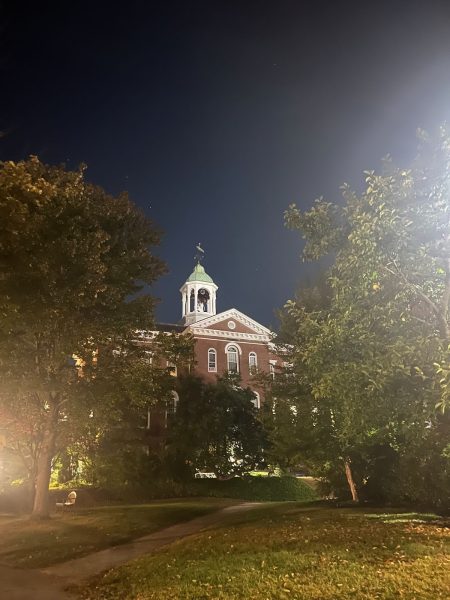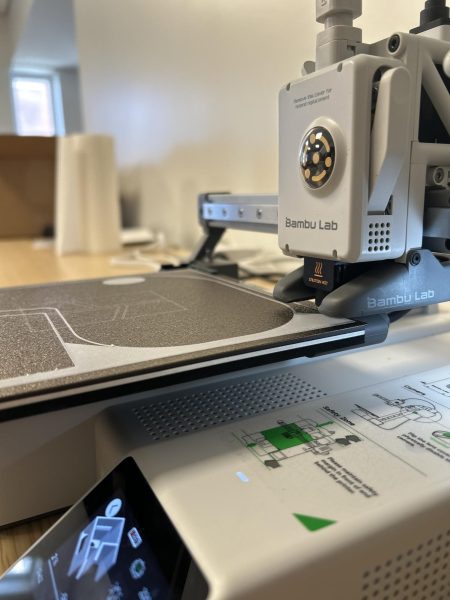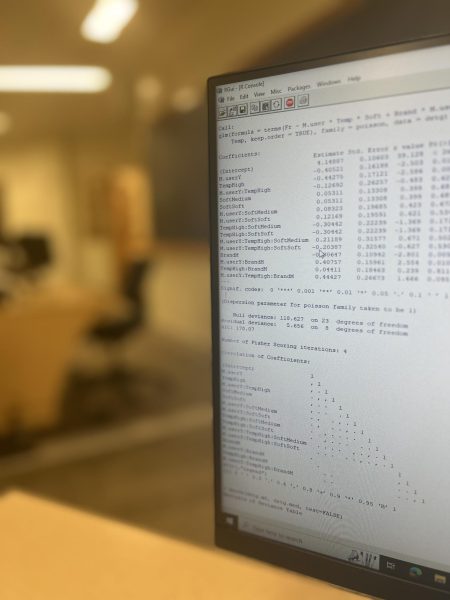Science on Display: The Renovation of Dana Chemistry Hall Will Cater to More Than Just STEM Classes
It is easy to be distracted by the grandeur of Bonney Science Center, which recently opened in late June; however, the Bates community has yet another expectant addition to its science buildings: the renovation of Dana Chemistry Hall.
In the fall of 1965, the doors of Dana Chemistry Hall were opened for the first time as a replacement for the original science laboratories in Hedge Hall. The building, named for class of ‘67 alumnus Charles A. Dana, LHD, the industrialist, philanthropist and President of the Dana Foundation, has since housed the chemistry and biochemistry departments.
Besides a new biochemistry lab, a prep lab and a one-story addition that was added in 1993 to provide adequate chemical storage space, there has been little improvement or effort to modernize Dana.
Almost 60 years since Dana was originally built and nearly 30 since the additions, the renovation is expected to be completed mid-summer of 2022.
Geoffrey Swift, the Vice President for Finance and Administration, and Pamela Wichroski, the Director of Capital Planning and Construction, have worked closely on both the construction of Bonney and the renovation of Dana.
“The origin of this started four to five years ago when we really started to go into the planning process of what were the science facilities that Bates had and where we wanted to go,” Swift told The Student. “If we were able to secure a big gift, and able to start moving towards modernizing our sciences, what would we do and how would we approach that?”
The planning for the modernization project began by targeting the most dated features: the vivarium in Carnegie Science Hall and the organic chemistry lab in Dana. The design and function of Bonney was therefore built around creating the most up-to-date version of these spaces.
Based on these conclusions, the project was divided into three individual efforts: the construction of Bonney, the renovation of Dana and the improvement of Carnegie.
Dana was chosen for the renovation above Carnegie due to the two additions that have been made to Carnegie since its original construction, which complicate the floorplan and make it a harder space to work with.
Payette, an architecture and planning firm originally from Boston, was hired for all three parts of the science facilities modernization project. This same firm has been used across the NESCAC and has completed projects at both Amherst and Williams College.
Prior to the renovation, a cinder block wall greeted those who entered the building on the Historic Quad side of Dana. Those who entered on the side of Alumni Walk were directly met with one of the bathrooms. Swift explained that one of the main goals for the renovation will be to improve circulation, and thus designing the halls so you could see to the other end of the building after walking in.
The first floor will now contain two matching introductory chemistry labs, a prep space, a 32-person breakout room and new gender-neutral bathrooms. An interesting feature to this floor will be a student space flipped from the old blowout panel, which was once used in the case of an explosion to release pressure outside of the building rather than into it.
In the planning team’s research, it was found that the most used classroom spaces were the 1,000-square-foot flexible classrooms. On the second floor, there will be new additions of these flexible classrooms to be used by any department at Bates, as well as by students to work in.
On the third floor, there will be more flexible classrooms, a few biology labs, offices and student spaces with windows overlooking Alumni Walk.
“Imagine coming into this building as a first year chemistry major, and you walk into the building with one friend who is going to a poli sci class, and another who is going to their biology lab. The poli sci person is going to walk right past the chemistry stuff, and they will know their buddy is doing biology upstairs. They might get exposure to science they hadn’t had before,” Swift narrated.
The goal of the renovated space is to make it more inviting to all students, not just those who are already focused on STEM.
Similar to the hope that Dana will be a resource for students outside of the STEM majors, classes not necessarily science-related are currently being held in Bonney.
“Science on display is the mantra for modern science buildings,” Swift stated. “When you walk into Bonney, it is no mistake that when you look a little to the left, the first thing you see is huge panels of glass that lead you into the organic chemistry lab.”
The hope is for students from different disciplines to learn from each other. “This is the liberal arts, so you don’t want science cloistered off,” Swift further explained.
The addition of the humanities classes in both Dana and Bonney spaces is also meant to make STEM classes more accessible and inclusionary to Bates students. “The more that people come through and see what science is, the more it fosters a conversation with someone who is totally terrified of organic chemistry and does not believe that a chemistry major is for them, because they don’t know what is behind that wall,” Swift explained to The Student.
Although it will be some time before we can walk our normal paths through the Quad or step foot into Dana, Bates students and faculty alike can look forward to another space for both STEM and humanities disciplines to enjoy.
Your donation will support the student journalists of Bates College and help us cover our annual website hosting costs.

Elizabeth is a member of the class of 2023 and is from Richmond, Rhode Island. She is a double major in English and chemistry and is also a member of...






